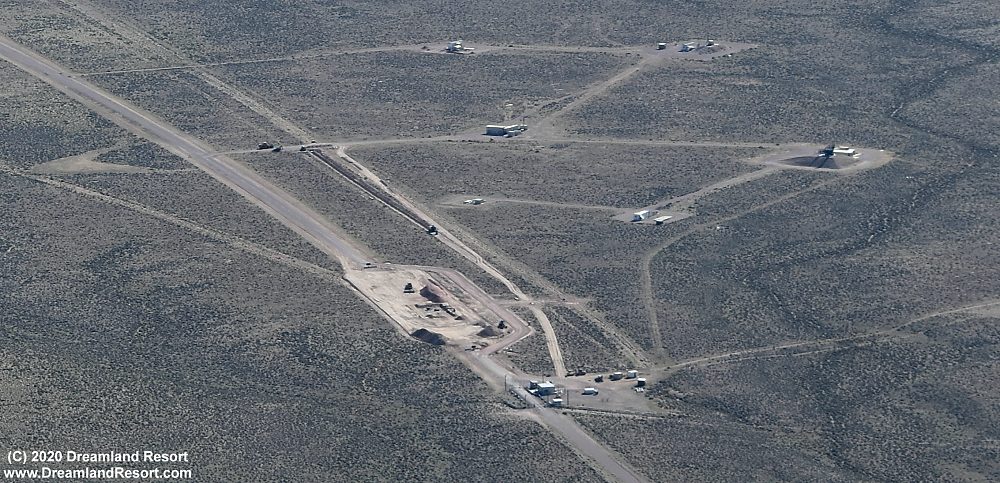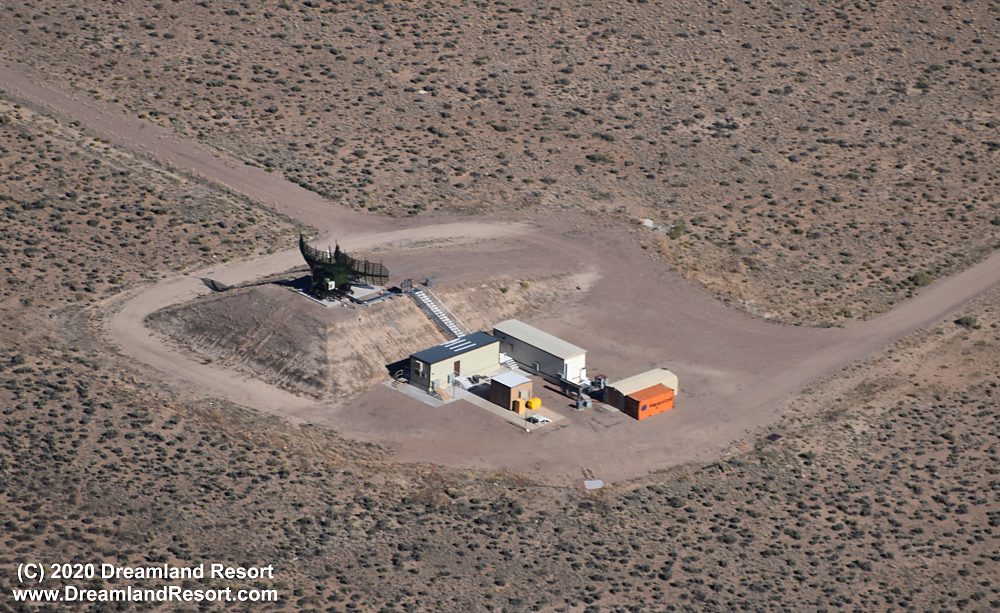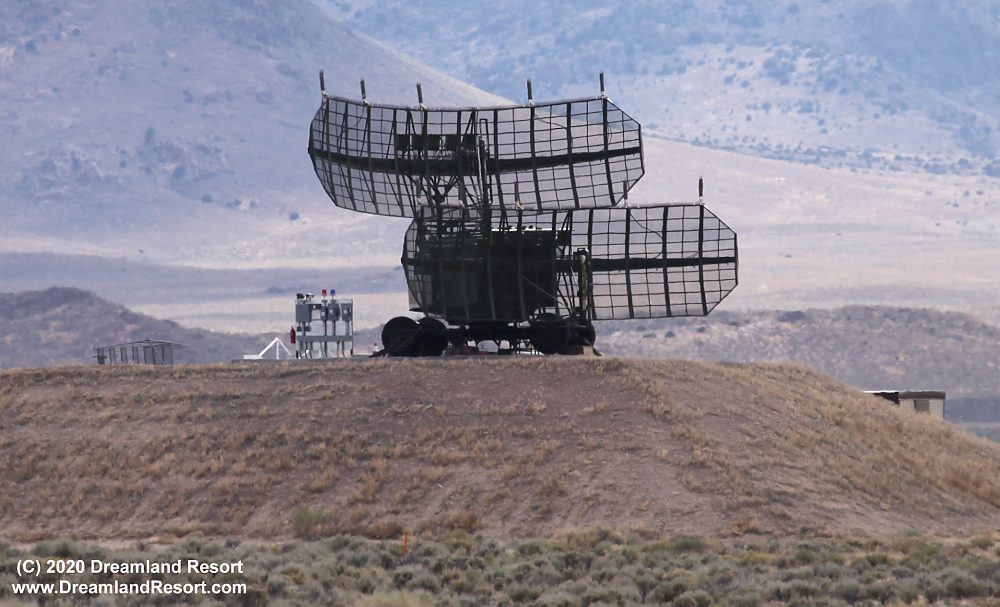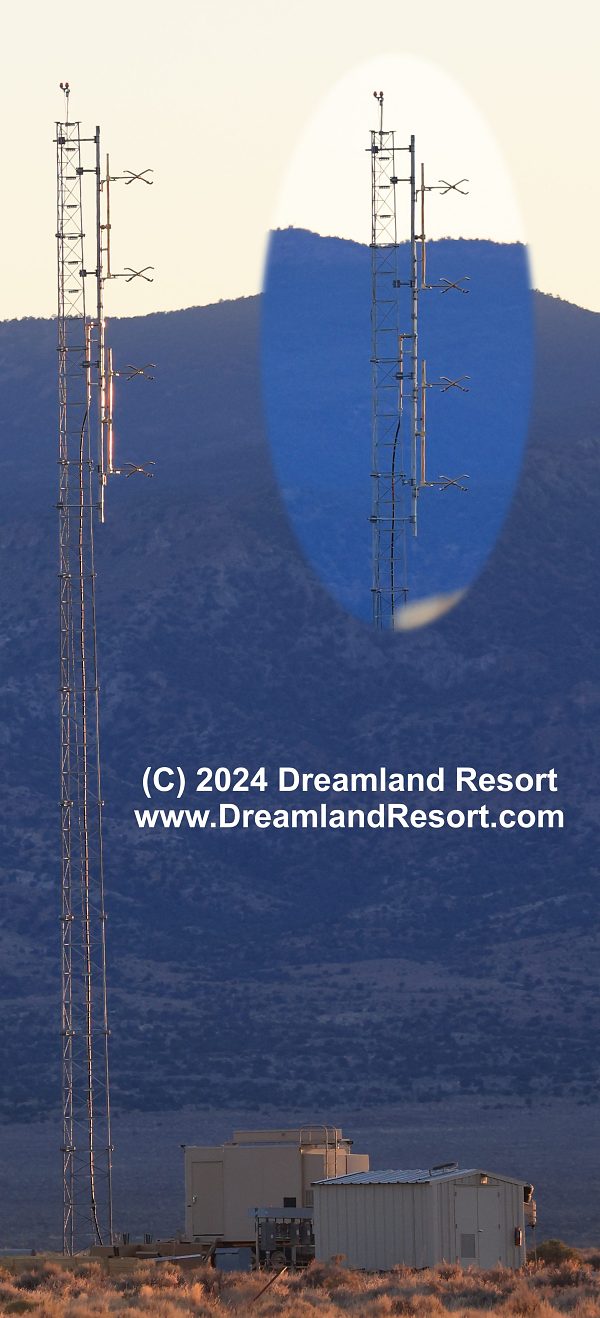 Another transmitter in EC-West near TTR is active Monday morning thru Friday early afternoon on 99.1 MHz (Radio S4", 37° 44.128'N 116° 29.850'W). Both transmitters are likely part of testing jamming hardware for passive radar systems. Passive radars have no transmitter but utilize existing FM radio stations for detection of aircraft by measuring their reflection. On 10/09/2024 we monitored a mission involving the radio sites. One of the Beech Janets, N661BA, operating from TTR, was flying in the area and testing an onboard system referred to as "Pluto". [09/12/2024] |
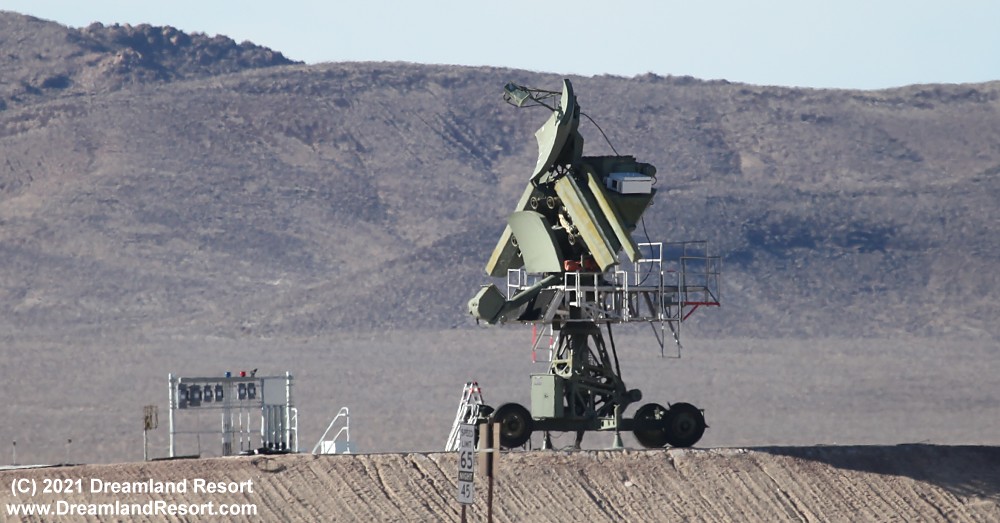 This Russian S-125 "Low Blow" radar site was added to the collection of foreign radar systems near the Back Gate in November of 2021. It sits about 1/3 mile inside the perimeter. It is an I-band acquisition and tracking radar for the SA-3 missile, designed to guide the missile towards low-flying targets through heavy clutter. A pair orthogonally mounted, electromechanically scanning antennas improve low-angle performance by reducing interference from ground clutter. This is a very capable system: A single battery shot down both the F-117 and an F-16 during Allied Force. Click here for a photo of the site being delivered on a flatbed truck on 10/30/2021. [11/30/2021] |
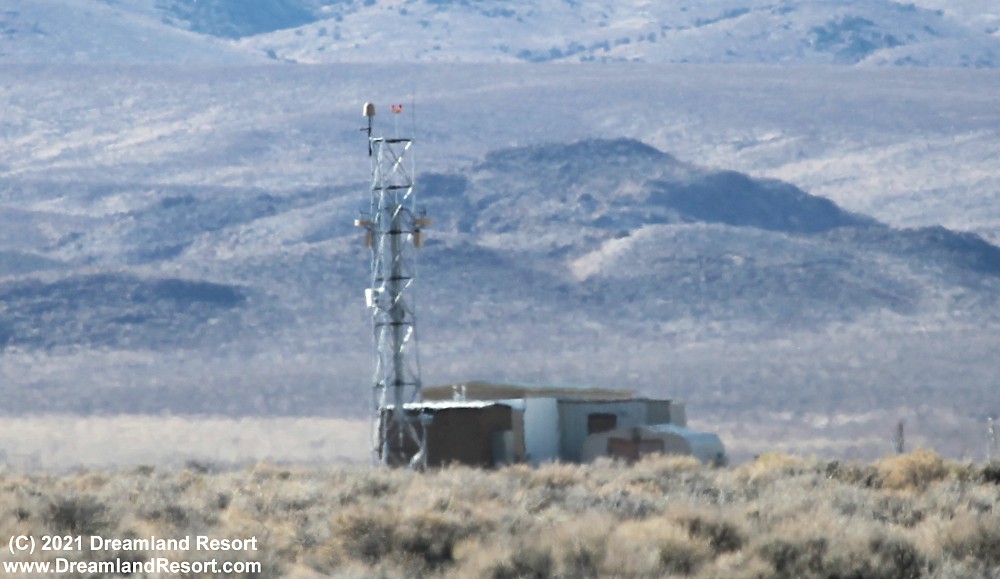 This radio tower about 0.8 miles inside the perimeter was likely added in the fall of 2021 in a location that is not easily visible from the Back Gate. It is very similar to a new tower added near the Groom Lake Road gate around the same time. It includes a microwave intrusion detection system and a high speed data relay from Cedar Peak to the Back Gate and to mobile units in the area. [11/30/2021] |
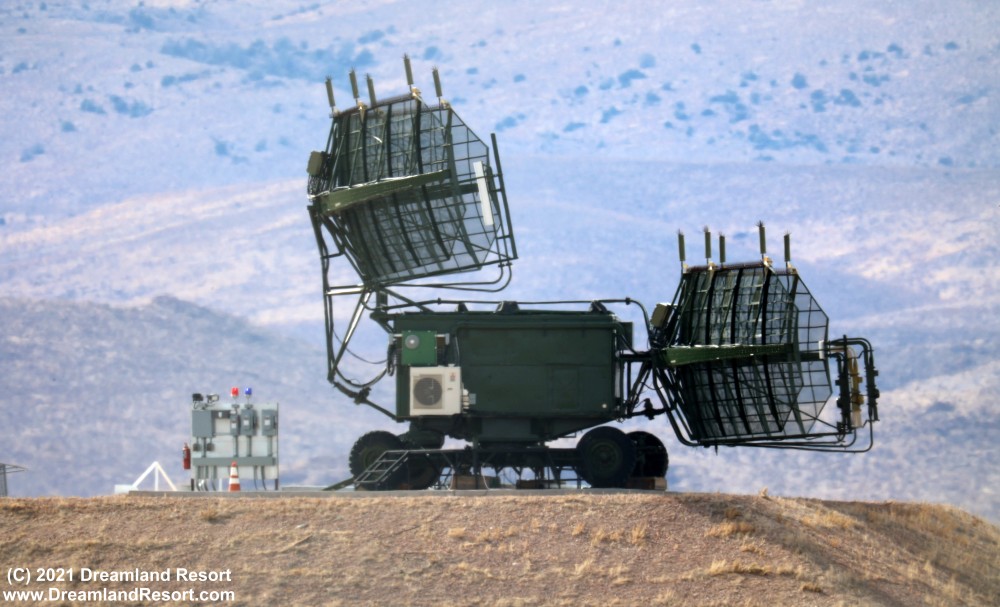 Another high resolution photo of the P-37 radar site (see below) from a slightly different angle. [10/30/2021] |
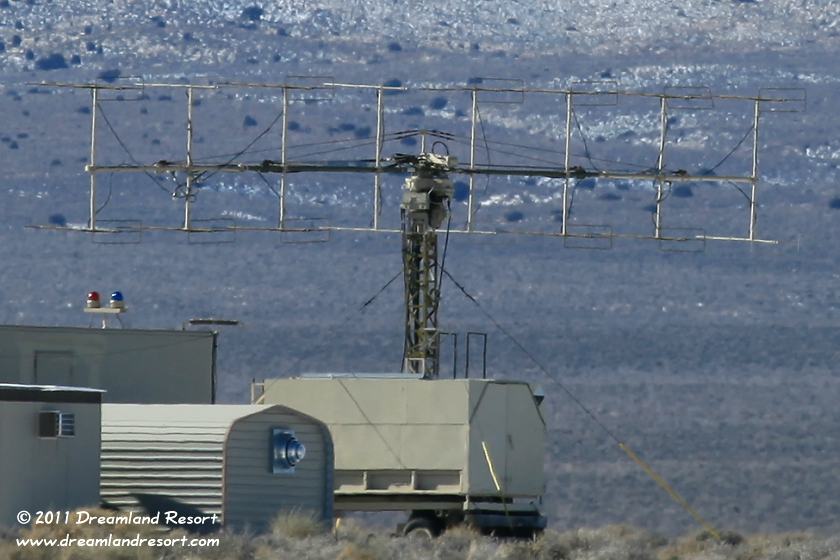 Russian "SPOON REST A" target acquisition and early warning radar. Its range is 275 km, the max. altitude 32 km. It operates in the VHF Band, we are told possibly around 150 MHz. [12/17/2011] |
 Russian "PRV-11 SIDE NET" height finding radar, similar to the one near Cedar Gate. It was designed for use with the Russian "S-200 SA-5 GAMMON", which is a medium to high altitude surface-to-air missile system. It is also used with the SA-2/3 SAM. It has a range of 28 km and a max. altitude of 32 km. The radar operates in the E-band. [12/17/2011] |
Older Radar Units at the Back Gate that have since been removed
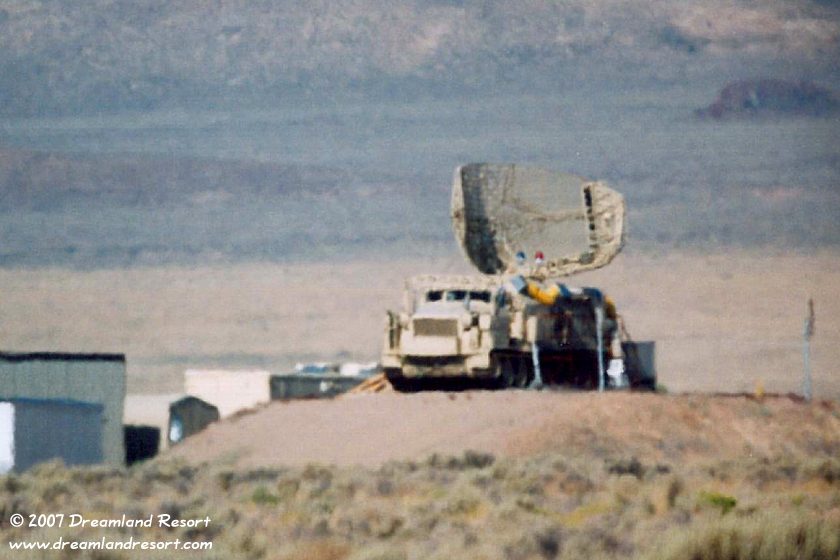 A Russian "LONG TRACK" long-range acquisition radar with a detection range of over 300 km and up to 30 km altitude. The Long Track radar operates in the "E-Band" (2.7-2.9 GHz) and integrates with the "Thin Skin" height finding radar below. This was the first system to detect stealth aircraft by changing modes and frequencies. Long-Tracks and Flatface were used during development of Have Blue, the prototype for the F-117 Stealth Fighter. This site was replaced by the "PRV-11 SIDE NET" (see above). |
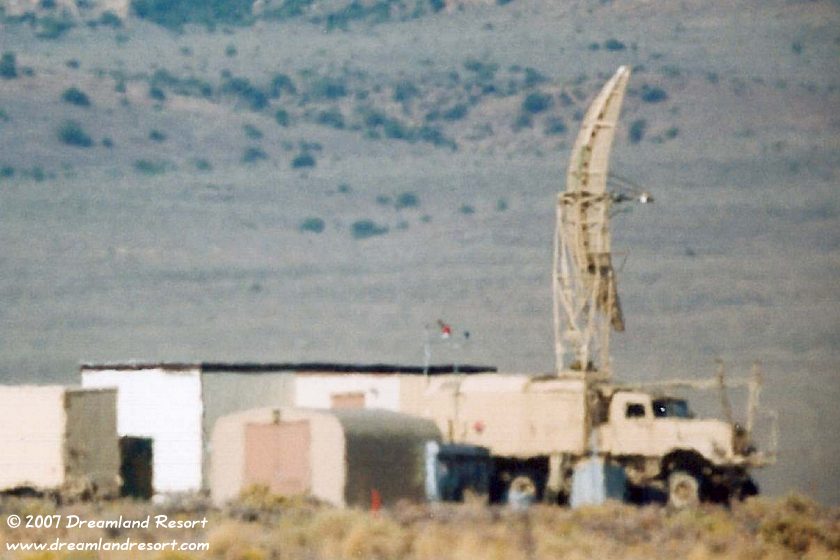 A "THIN SKIN" height finding radar with a range of 240 km, and a max. altitude of 30 km. It can be integrated with the "Long Track" radar above to provide 3-dimensional target information. It also operates in the "E-Band" (2.7-2.9 GHz). This site was removed some time before November 2006. Both are Russian/Warsaw pact systems and can be used in conjunction with the FAN SONG radar for the SA-2 Guideline SAM. They may be used here for Red Flag exercises, or for testing new stealth technology, currently under development at Area 51. |
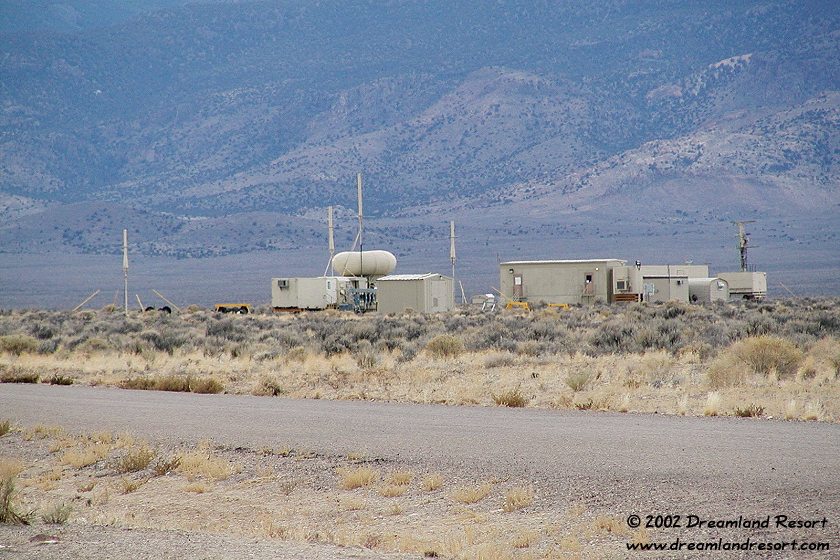 This radar site was added to the cluster around the North Gate in early 2002. The "donut" in the background contains a rotating radar (see below). The array of four vertical antennas in the foreground is for the mobile Russian air-defense command and control center code named "Mercury Grass". It is a phased lock loop (PLL), line-of-sight, multichannel comm gear that dates to the late 1950's. It became standard field gear for Warsaw Pact, N Korea, China, N Vietnam, and was the primary voice comm gear employed at SA-2 SAM sites. This photo was taken on 11/29/2002. The site was partially disassembled in 2009 and is no longer active. |
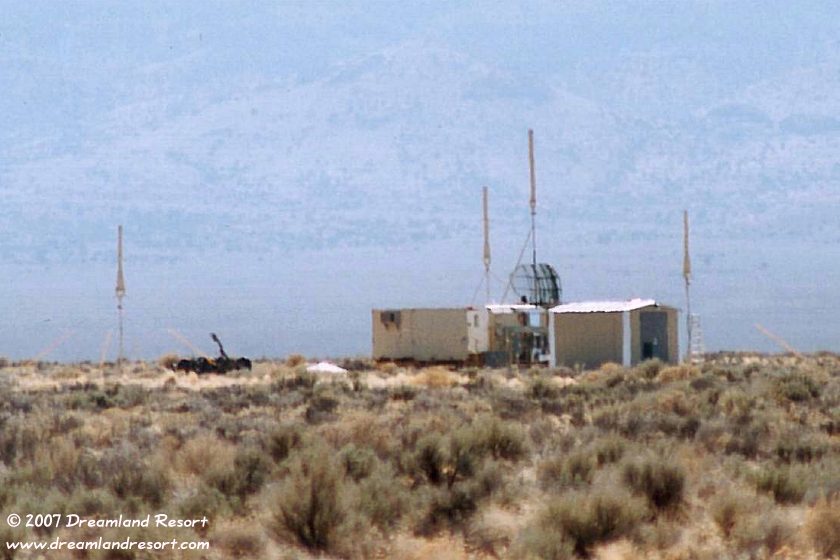 The same site while it was being set up on 3/29/2002. The rotating radar, now covered under the "donut", is still visible. |
 Closeup of the new site. Notice the large breaker boxes at the control center. Photo taken on 11/29/2002. |
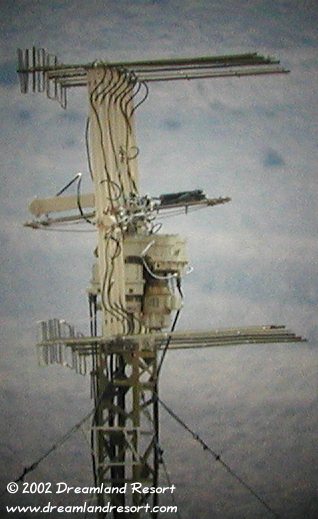 Closeup of the "Spoon Rest". Its main axis is in line with the camera, but its elements are actually pointing to the right |
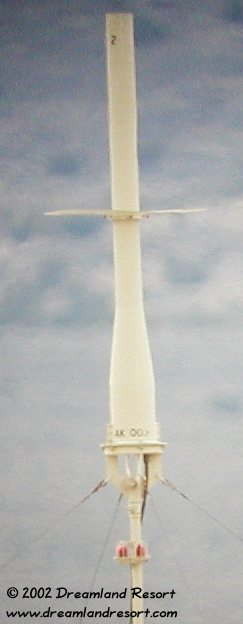 Closeup of one of the "Mercury Grass" antennas above; it is marked "AK 003" near the bottom |
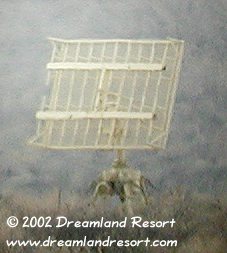 "Score Board" IFF interrogator, associated with the "Spoon Rest" and located just north of it |
